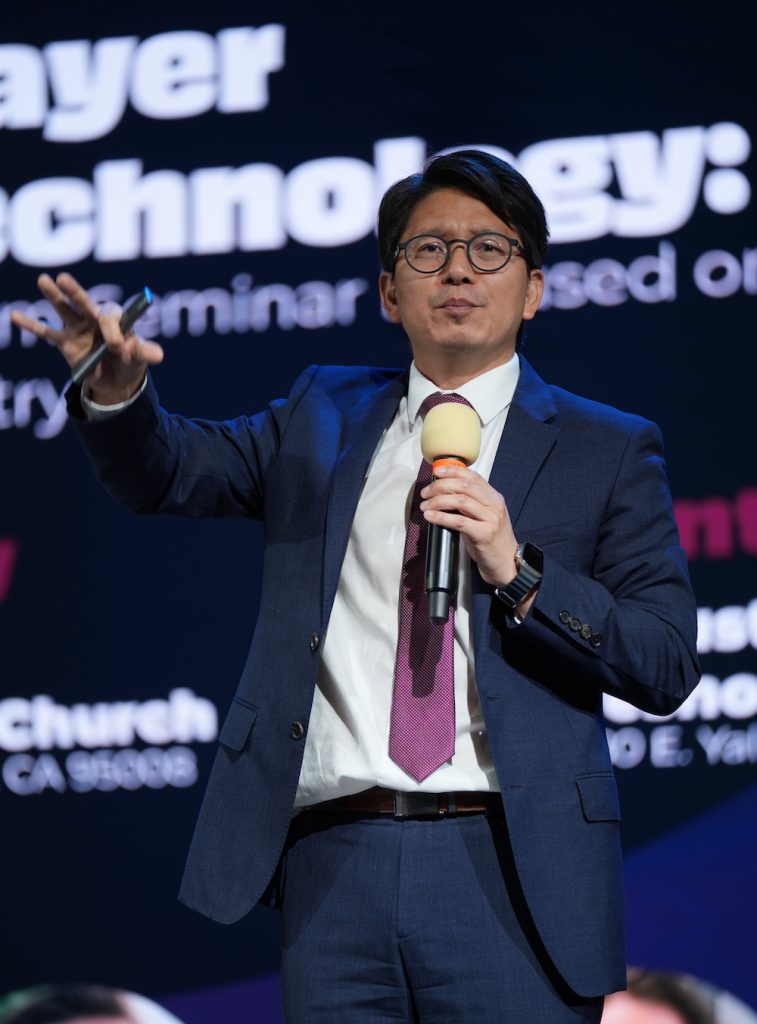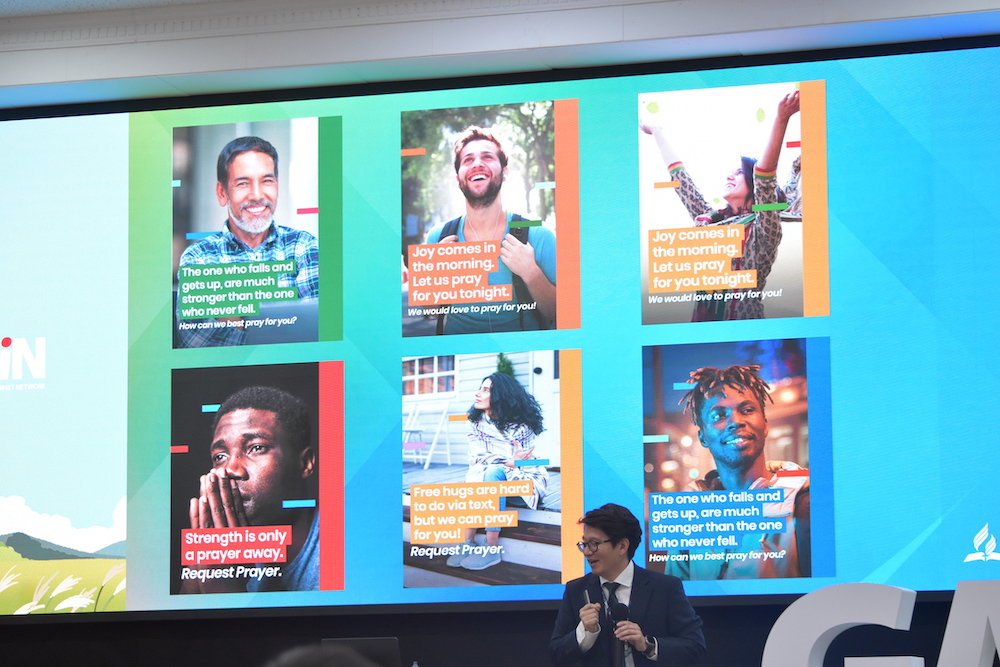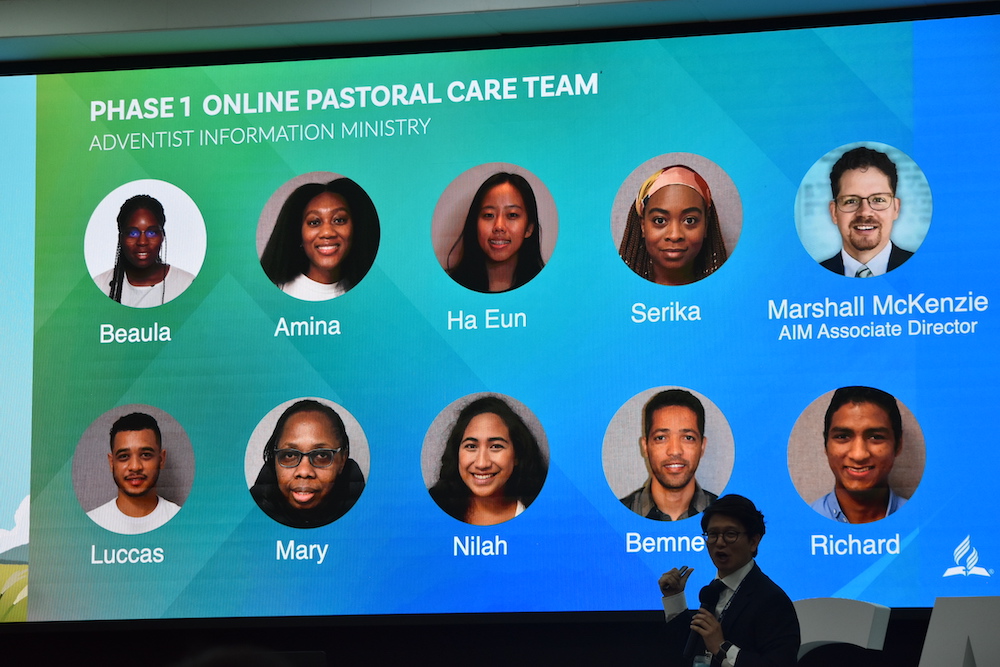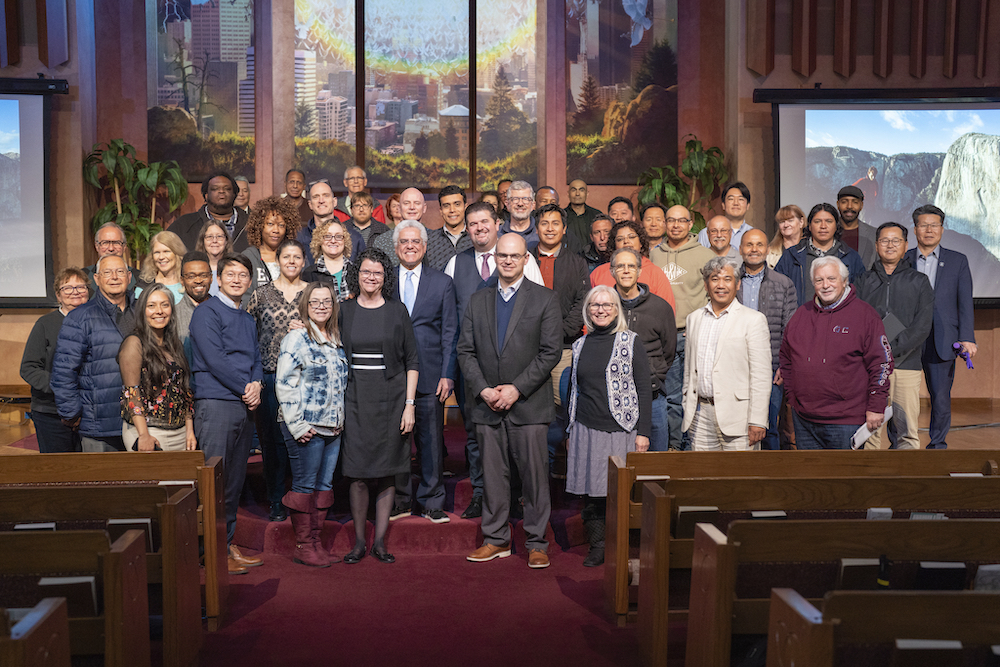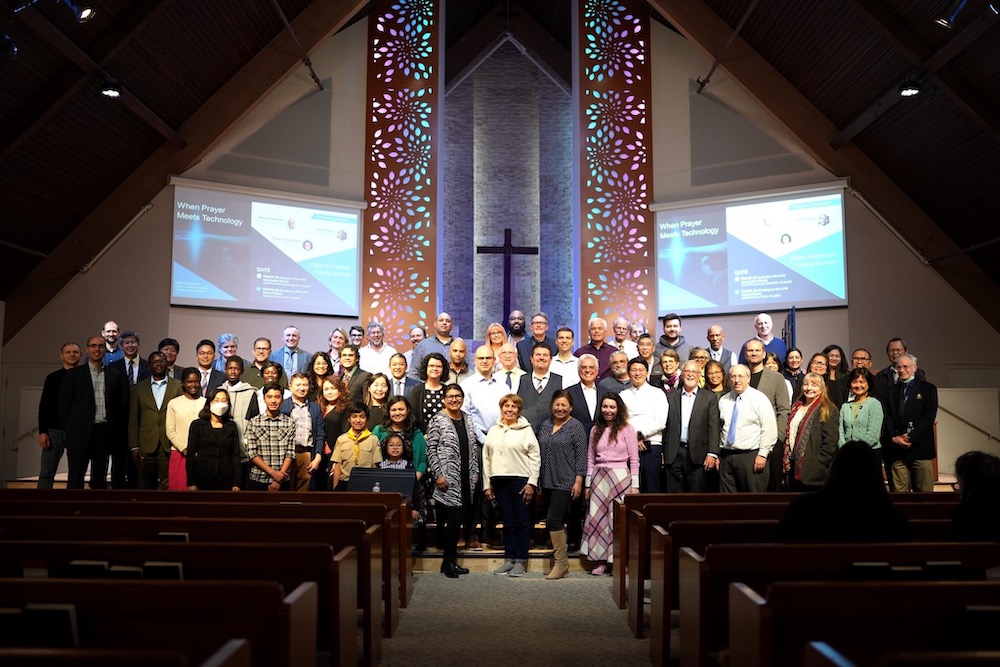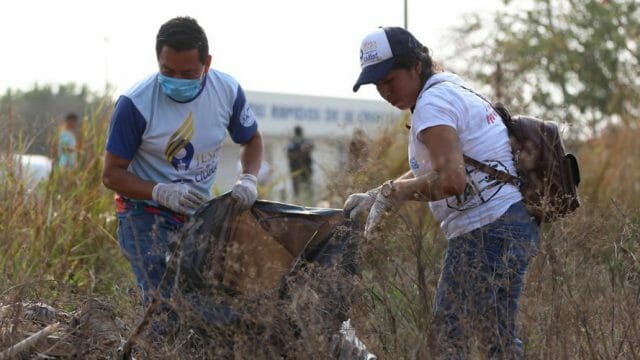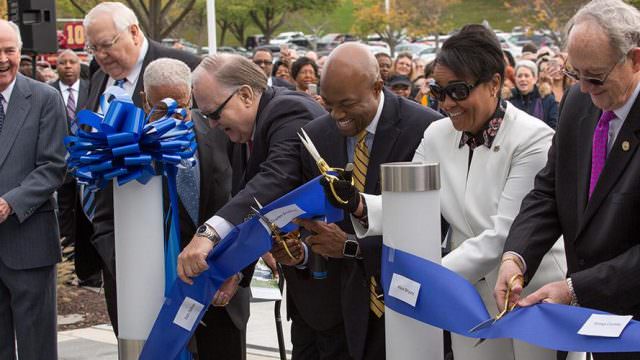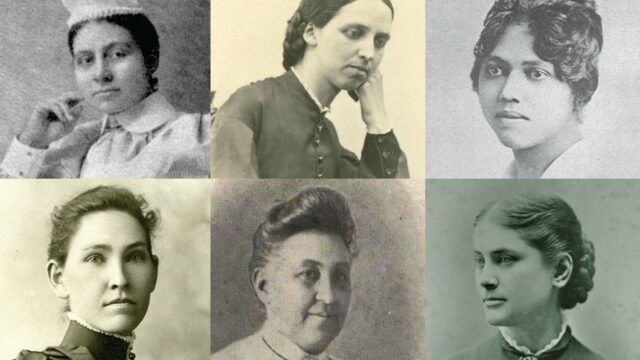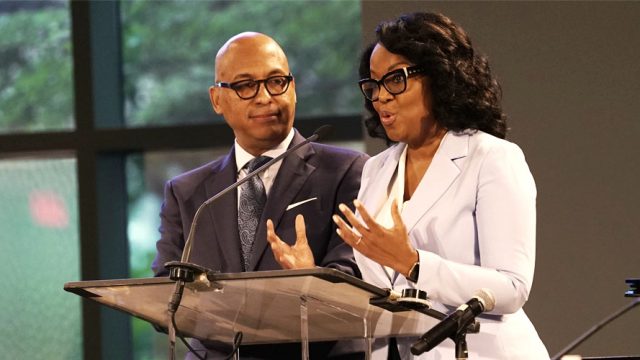A simple social media ministry highlights the potential of digital evangelism.
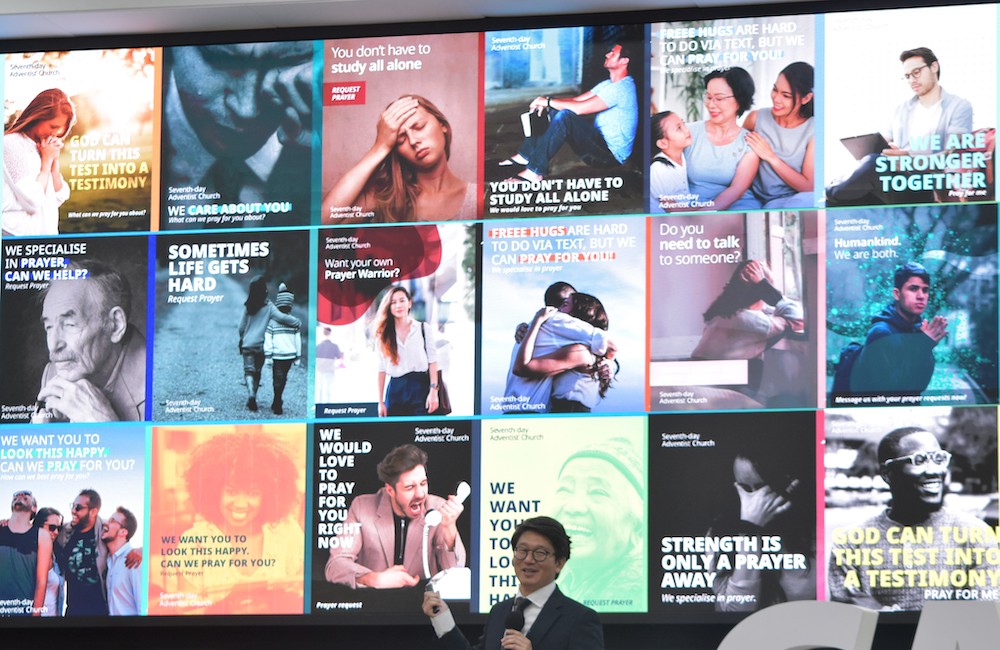
As part of the 2023 Global Internet Evangelism Network (GAiN) Asia Conference, Seventh-day Adventist communicators from across Asia learned about the possibilities of digital evangelism through a recently implemented method that involves prayer, follow-up, and personal engagement using technology.
On September 14, Justin JoungHan Kim led more than 230 attendees gathered at the Northern Asia-Pacific Division Leadership Training Center in Jeju Island, Korea, to reflect on his recent experience as digital evangelism director of the Adventist Church’s Central California Conference (CCC) in the United States. He shared how he and his team have enlisted the help of tools already available and the support of the North American Division (NAD) and the General Conference (GC) Communication Department.
“The CCC is a region that includes Silicon Valley, the home of Google, Apple, Facebook, and many other large technological companies,” Kim told the audience. “That area also has the lowest population of Seventh-day Adventists in the NAD.”
He added that it also has a sizable population of atheists or people with seemingly no spiritual inclinations. It’s hardly surprising, then, that many Adventist churches in the area are struggling to reach people with the gospel, he said.
The Role of Digital Evangelism
Digital evangelism includes three essential aspects, Kim said. It is based on (1) content creation (2) to share and eventually (3) engage others. He tried to share this idea with the churches in the area, but his early efforts seemed to go nowhere. “When I went around talking about it, I saw very low excitement, as if people were thinking, ‘This is not for us; it’s for some younger, tech-savvy people out there,’ ” Kim said.
Kim eventually found a project connected to the GC Communication Department, which includes posting ads on social media that simply offer people someone to pray for them. After a steady follow-up, those who desire it can receive additional guidance to get acquainted with the Bible and its teachings.
It’s a project that has already proved to be immensely successful in various regions around the world. Getting acquainted with it “was a ‘eureka’ moment for me,” Kim said.
What the Process Entails
“Marketing is a secular term — we call it evangelism,” Kim said. Thus, the idea is “to present prayer, then follow up, and finally connect interests with a local church.”
Kim explained that the process includes an online phase first, and then moves to an online and in-person second phase. Specifically, prayer ads eventually lead to online prayer meetings and pastoral care.
When a person contacts them asking for prayer, they immediately pray with the assistance of a media response team or a GC media response team. The next day, someone in the team follows up on the person who contacted them. And they keep doing it for days, building a relationship with them.
This online pastoral care phase has enlisted the support of the Andrews University–based Adventist Information Ministry (AIM), which employs seminarians studying to be ministers of the gospel to function as chaplains, offering spiritual care. A 24/7 ministry, AIM is the central contact center for Adventist media outreach in North America.
In the second phase, there is community engagement, online small groups, and eventually, a public evangelism meeting, he said. Kim explained that they discovered that people who have spiritual needs usually also have physical needs. That’s where the community service and engagement component comes in. Then, people start connecting with others through online small groups. “After three months, we are usually at the point where we can invite people to come to church,” Kim said.
Project Implementation
Kim and his team began to implement this program in the CCC. They selected a 10-mile radius around six congregations in the area, to target the communities with customized ads.
The first time, the CCC team used ads that have been used with amazing success rates in Brazil. “Joy comes in the morning. Let us pray for you tonight,” one ad would say. “The one who falls and gets up is much stronger than the one who never fell,” another would proclaim.
“We did the same in Silicon Valley, and it was a disaster,” Kim acknowledged. “We would spend 100 [U.S.] dollars, and we would get one prayer request.”
Then, the team decided to try again, this time creating ads more adapted to the style and ethos of Silicon Valley. Some ads the CCC team tried would read, for instance, “We specialize in prayer. Can we help?,” or “Do you need to talk to someone?,” or simply, “We would like to pray for you right now!”
The response was significantly better, Kim said. “But it was still not enough,” he added. “So, we created short prayer ads featuring the local church pastors, and results improved significantly.”
The Importance of Localization
One of the greatest things about this initiative is that it’s very simple, Kim said. “You can implement it in any country, in any culture.” At the same time, he emphasized, localization is very important.
“We were more successful when we prepared ads with the local pastors in their environment — for instance, in the case of Silicon Valley, in front of Google, telling them ‘I will pray for you; I am your neighbor,’ ” Kim said.
In that area so challenging for the gospel, a pilot implementation of the initiative in just six local congregations has already led to 1,358 solid contacts — those which imply daily repeated connections — and 17 church visits and one baptism, Kim reported. “These are real people, real responses, real activity…. And this is something that had never happened.”
And from a financial point of view, it is cost-effective, Kim emphasized. In their case, he said, “we know that if we spend five dollars in an ad, we will get one prayer request. If we spend $50, we are going to get 10 requests. And for $500, we will get 100 requests. Isn’t it great?” he said.
Feedback from Local Pastors
The initiative has not only benefited those who call requesting a prayer, Kim said. Local pastors have also come on board as they experience by themselves how simple but powerfully effective the prayer digital evangelism initiative is.
“Our church has made contact with more than 400 individuals through this project,” Daniel Gouveia, pastor of the Central Fresno Adventist church, said. “What’s even more exciting is that many of these people are voluntarily stepping forward to be part of our community.”
Mark Ferrell, pastor of the San Francisco Central Adventist church, agreed. “During my ministry, I’ve tried various methods of evangelism,” Ferrell said. “Finally, I’ve found this digital approach to be the most effective way to reach out to our community in our modern times. It’s truly transformative.”
Local Churches Involved
Local church members and leaders have been energized after finding out that the system works. More than 200 members recently signed up to attend a digital missionary training seminar. They are the ones who will be key to leading in the essential engaging part of the process.
“Hope Channel and the General Conference can create content and share it,” Kim explained. “If the General Conference devotes effort to engagement and public relations, it might work, but there’s an unreliable, unstable broken link.… As I see it, engagement must take place at local church and conference levels,” he said.
When local members get involved, they can invite people, telling them, “ ‘This is my church. Please, come!’ ” Kim said. “If we manage to decentralize the process, we’ll be able to multiply it. Because when prayer meets technology, we can truly help to save souls.”


